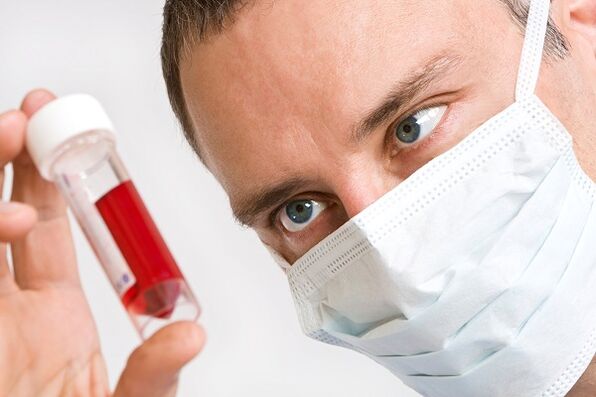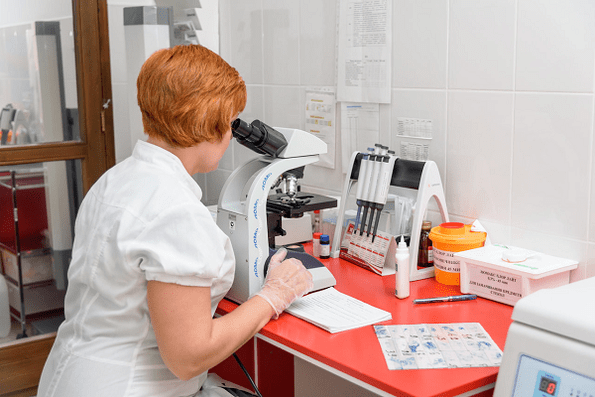If you need to get tested for HPV, there is nothing to worry about. Most procedures are completely painless, and some are tolerated by any patient. Review the most common test delivery questions.
What is HPV?
Human papillomavirus is a microorganism that contains the cellular structure of DNA. When HPV DNA enters the human body, it causes a mutation that causes irreversible processes. The majority of the population is already a carrier of the virus, but few people understand that the virus does not manifest itself in any way.
When the body fails, the immune system weakens and growths appear in the body. It is HPV that affects all formations on the skin except moles and pimples. If the growths are not treated in time, a malignant disease develops and a benign wart can turn into cervical cancer in women and urethral cancer in men.
Why is the human papilloma virus dangerous?
When papillomas, genital warts, or warts appear on the body, an ordinary person cannot distinguish them by confusing them with something that cannot harm them.
It's not that simple - a small papilloma can grow, which can cause a lot of discomfort - from aesthetic discomfort to the development of cancerous tumors. More than 130 human papillomaviruses are known, and each manifests itself differently.

The most common of these are types 16 and 18, which cause cancer of the mucous membranes, cervix, vagina, penis and other similar diseases. Initially unaware of the presence of the virus in the human body, HPV develops gradually, and after 5-10 years, the human body sees changes in the form of growths.
Papilloma analysis can be done in any clinic. After 40 years, more than half of the wounds become malignant. Timely diagnosis gives a person a chance of a painless old age that will not be overshadowed by cancer.
Why test for human papillomavirus?
To protect against oncogenic diseases, you need to identify potential threats to life and health in a timely manner. With an extensive list of causes, HPV is transmitted from person to person through close contact - hugging, kissing, sexual intercourse, using common hygiene items.
The virus takes root under the skin and mutates throughout the body, disrupting healthy DNA. When immunity is compromised, HPV appears on the skin in the form of warts, papillomas and similar rashes. Only one test can detect the virus at an early stage and prevent it from spreading further.
When is an HPV test scheduled?

When the first signs of the disease appear on the body, the doctor can see them even with a visual examination. An HPV test is prescribed to understand where the virus is coming from, to identify the type, and then to eliminate it.
Although not all infected people can be diagnosed with cancer, no one wants to be tested, that is, they need to be tested. If a woman is planning to become pregnant, she should be tested for HPV because the virus can easily penetrate the baby. The father should not be indifferent, because he may be a carrier of papillomavirus.
Features of testing for HPV
It is believed that the detection of HPV before the age of 30 is not informative, because the disease goes far beyond the human eye. After 30, the first tests that can detect such papillomavirus at the earliest stages are scheduled.
The shorter the time of infection, the more effective the subsequent treatment. It is necessary to determine the moment when normal cells begin to turn into cancer cells. Diagnosis of human papillomavirus depends on several factors:
- Identification of the virus and its presence in the body
- Learn the range
- Assess the damage during the period when the person did not seek medical help
- Assign high quality and effective treatment
Remember:the virus will never leave its host completely because it is already interacting with the body's DNA cells. HPV will remain dormant until immunity is weakened.
What tests are needed to detect HPV?
- Colposcopic examination. HPV testing in women is done this way. Developed to detect genital warts. It is prescribed to women to detect genital warts located in the cervical region.
- Cytology. A smear containing epithelial cells is taken, and the samples taken are then examined under a microscope. If the cells are changed, there is a risk of developing HPV. There is a risk of getting the wrong result.
- Histology. It is an addition to the cytology to rule out errors. A small piece of tissue is taken from the affected tissue and the doctor assesses the severity of the condition with a microscope. It is possible to determine the nature of the formation with the help of histological examination.
- PCR diagnostics. The most accurate way with 98% accuracy. A tampon, urine, blood or amniotic fluid is taken
If at least one test detects the presence of the virus, the patient will be sent for additional testing to ensure the accuracy of the result. If the result is found to be false positive, the cause may be contaminated test material or a violation of generally accepted sampling techniques.
Sometimes patients prepare incorrectly for the analysis or choose the wrong time for the procedure - these factors can also lead to incorrect results.
Test rules
In addition to relying on the doctor, the patient must follow the analysis and know the basic processes. The doctor is a specialist, but health belongs to the patient.
How is biomaterial obtained?
The strokes are done with a soft brush that resembles a brush. Volkmann spoons are sometimes used in free clinics - a small spoon on a long handle. Such a brush is gently inserted into the channel, then removed by rotational movements. The brush is placed in a sterile container and sent for further examination.
How to prepare for the procedure for women
You can not have sex for 2 days before the procedure, you can not use soap, shower, tampon with antibacterial effect. If a swab is taken from the cervix, you will not be able to have sex, play sports, overheat, swim in public, or take blood thinners for 3 weeks after the procedure.

How to prepare for the procedure for men
Sexual intercourse is excluded, take a shower for 2 days without detergent. Do not urinate before the procedure.
General preparation for the procedure
You should inform your doctor about all medications taken by a person in the last 2 months.
How is an HPV blood test performed?
Used for PCR diagnostics. From one finger, sometimes from a vein, depending on what analysis the person will receive. A slight tingling sensation from the injection is the maximum discomfort from the procedure. If the arteries in the elbow are narrow, the blood draw will be difficult, but your doctor will tell you how to dilate the artery properly.
The procedure is performed on an empty stomach, you can not even drink water. It is advisable to take a chocolate bar with you. All foods that cause an allergic reaction should be eliminated from the diet 3 days before blood donation.
How is urine checked?
It is better to take care of yourself in a sterile jar. You can buy it at the pharmacy. Collect urine in the morning on an empty stomach in a jar. Then take it for examination, preferably immediately, the maximum time is 4 hours, otherwise the result will be invalid. The method is not as accurate as taking blood, but if it is not possible to donate blood, you will have to use this method.

How long does the HPV test take in women and men?
If a colposcopic examination is performed, the result is given immediately. The results of cytological examination will be ready in a week. Histology is performed within 3 days, after which you can get the test result. With PCR diagnostics, you can get the result immediately or wait up to 2 days.
When and how often should you be tested for HPV?
Until the age of 30, only those with clear signs of growth are examined. At this age, HPV is generally inactive and does not spread throughout the body.
From 30 to 60 years old should be examined every 3 years. Immunity is declining, so the symptoms of human papillomavirus must be detected in time.
After 60 years, there is generally no examination. If the presence of a virus has not been detected during the last two tests, there is no need to worry. If there are manifestations, you will have to continue treatment until the last 2 results are negative.
Delivery costs and prices of HPV tests
In the case of acute illness or as a result of a cancerous tumor, most examinations are free. It can be prescribed by an oncologist.
For a complete picture of the development of the virus, 2 methods are used to eliminate the possibility of false information.
Deciphering the results
Unlocking should only be done by the attending physician. The patient's intervention will not do any good. To understand what the results are, you need to pay attention to the following words:
- reference values- no HPV;
- positive result - oncogenic HPV strain was detected;
- The result is negative - no cancer has been found, but other types of HPV are more likely to be found.
If the patient decides to protect his health and to study the presence of human papillomavirus in his body, it is necessary to resort to the above methods. Timely diagnosis saved millions of lives and helped them find a quiet, healthy life. It is possible to prescribe quality treatment only after thorough testing.
Sometimes the patient is sent for tests without any external signs of the disease, and the procedure shows that there is HPV in the body. In this case, treatment will not take long. For this reason, doctors recommend seeking help in a timely manner.














































































